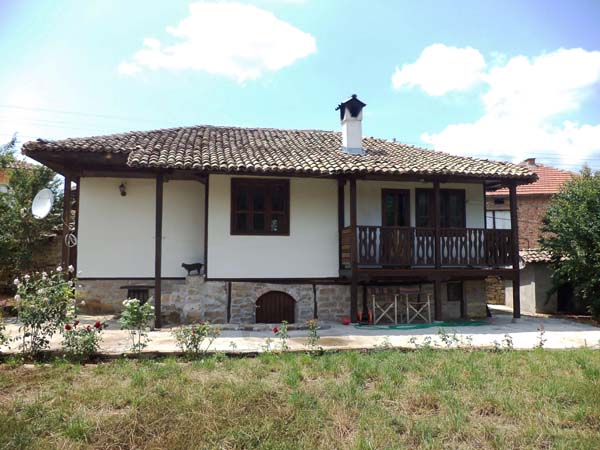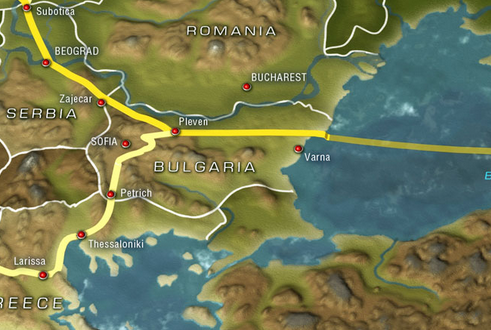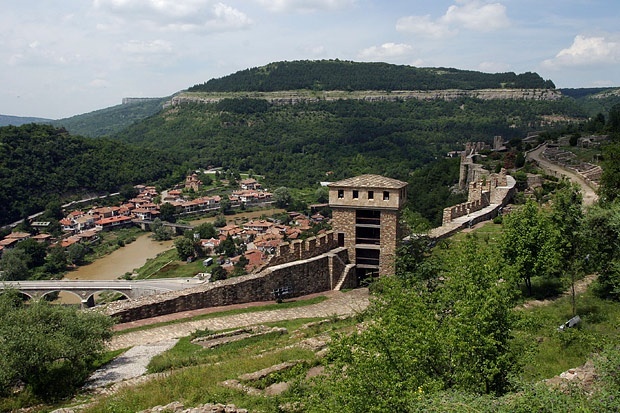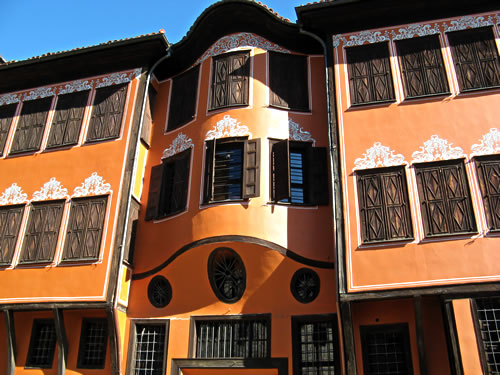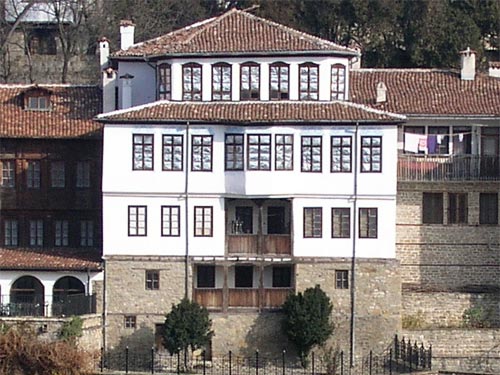
Sarafkina House facing the Yantra
The Sarafkine House is one of the crown jewels of the Veliko Tarnovo houses from the Revival Period and is part of the architectural ensemble of the Old Town. The House was built in 1861 for the needs of a wealthy merchant named Dimo Sarafina (saraf comes from Turkish, meaning someone who deals with money, a broker of sorts).
Much like other Bulgarian houses of wealthy merchants from that time (see Konstantsalieva House), the house was designed to serve as a residence and a workplace. Before its completion, however, Dimo Sarafina passed away and the property never got the chance to serve its original purpose.
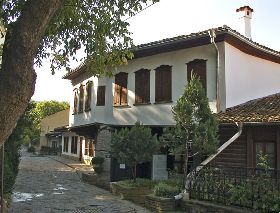
Sarafkina House facing the Gurko Street
The house then was inherited by merchant’s wife, Anastasia Sarafkata, thus the name of this beautiful building. It is built over 5 floors – all 5 facing the Yantra and the top 2 facing the Gurko Street, where it is also entered from. One enters a spacious vestibule, surrounded by four rooms and other small spaces, illuminated indirectly from the windows upstairs. The lower floors are used for basements and warehouses, which also lead to a large scenic terrace, today overlooking the Yantra and the Boris Denev State Art Gallery.
A steep wooden staircase leads from the lobby to the top floor. It is decorated with a small folding door and a lovely wrought iron railing, which then transforms into the inner balcony. Wooden columns, hand-carved wooden ceiling (resembling the sun) and dark shutters contrast with white plaster and create a feeling of warmth and comfort.
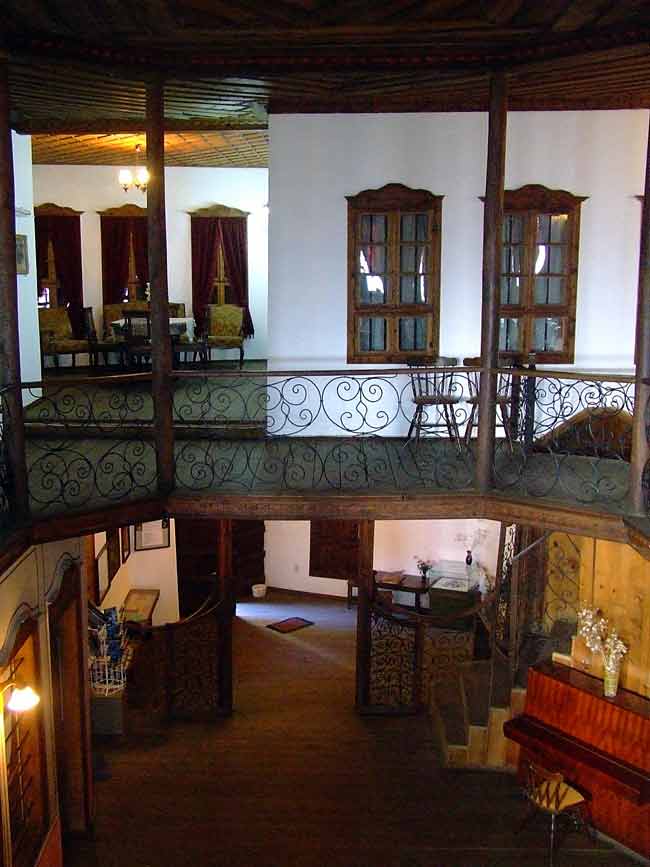
Inside
Sarafkina House served a variety of purposes. It was home of the Bishop of Kyustendil, home to the Orthodox Christian brotherhood “St. Petka” house for the poor, an amusement hall of the White Guards and others.
After its restoration was completed in 1981, the house went under the management of the Regional History Museum – Veliko Tarnovo. It is now a house-museum with permanent ethnographic exhibitions, which introduces the visitor to the main events of the national artistic characteristic of Veliko Tarnovo region in the late nineteenth and early twentieth centuries.

